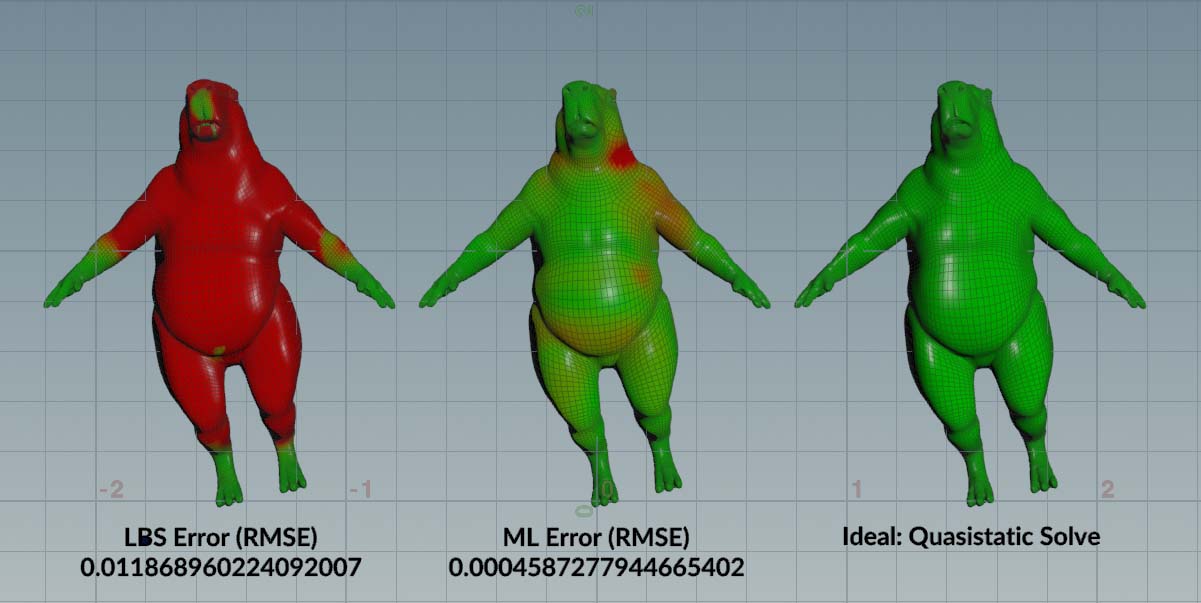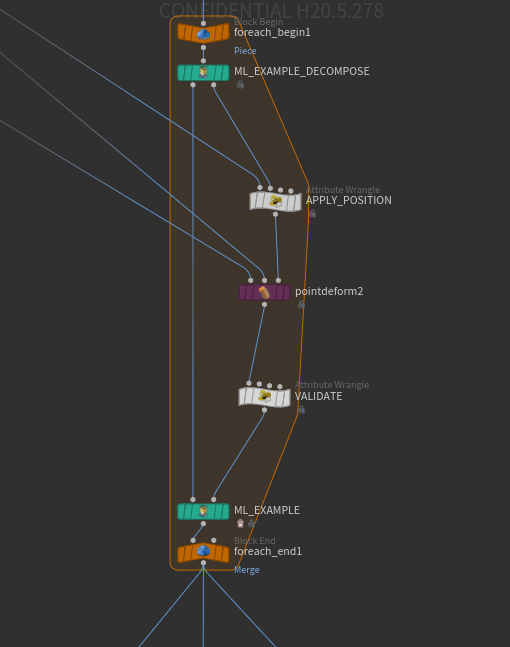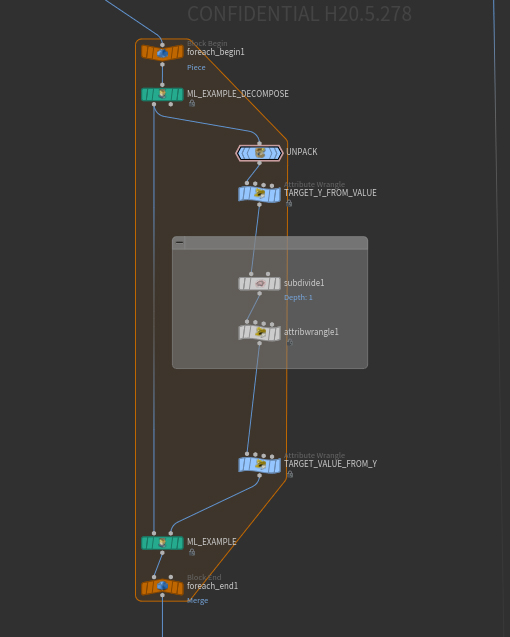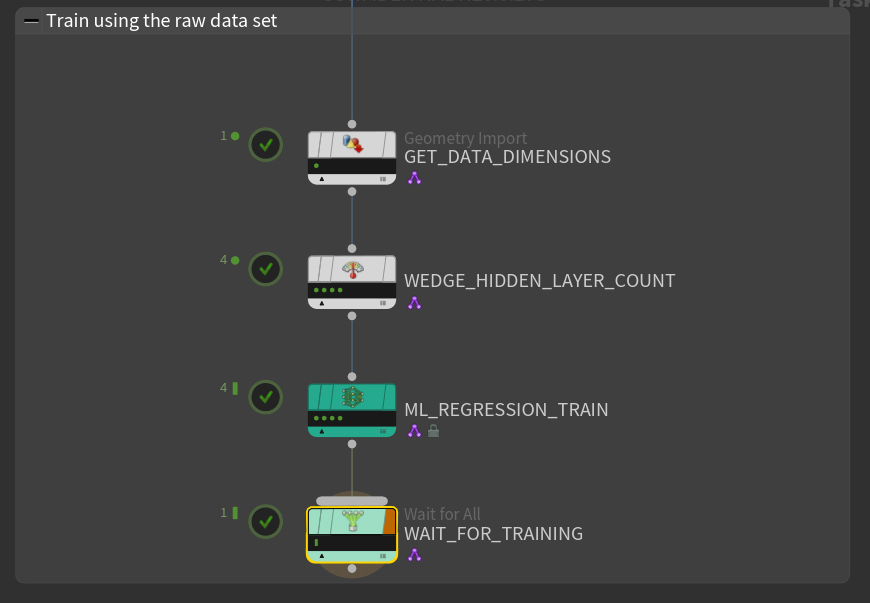
The new example-based ML nodes allow you to create machine learning setups entirely from within Houdini. A large class of regression problems can be solved using a new, generic ML training node, without needing to write a training script.
The example-based ML toolset consists of two parts:
-
SOP tools for generating data sets, preprocessing data sets, writing data sets to disk, reading data sets from disk, inferencing, and performing nearest-neighbor queries.
-
a TOP training node designed to be used with the SOP tools.
The example-based ML nodes consist of:
Generate a set of packed primitives, each of which contains a geometry with a specific attribute randomized. Each of these can be an input for a data generation step.
Create an example by combining an input component, for example generated by ML Attribute Generate with a target component, which may be the output of a procedural network for the input component.
Decompose an example into its input component and its target component. This is useful for pre-processing examples, for example, using Principal Component Analysis.
Partition a collection of examples into parts (subcollections). This is useful for optimizing the generation and pre-processing of data, allowing memory use to be balanced against speed.
From a collection of examples, extract the single example at a specified index. This is useful when processing examples from within TOPs. This is also a useful node for visualization and troubleshooting.
Write a collection of examples to a raw data file for training with ML Regression Train.
Train a model (feed-forward neural network) on a collection of examples previously written to disk using ML Example Output.
Apply a model trained by ML Regression Train to one or more (previously unseen) inputs.
Use nearest-neighbor search to find the input component in a collection of examples closest to a given query input and return the corresponding target component. This is an example of ML that is not deep learning.
Read from disk a collection of examples previously written using ML Example Output.
This adapter node allows the example-based ML tools to work with animation. It generates a randomized set of rig poses, which can be inputs for a rig to apply machine learning to.
This adapter node allows the example-based ML tools to work with animation. It converts a rig pose into a point float attribute, for inclusion in a data set. This same node would also prepare inputs for ML Regression Inference.



